Berlinale 2025 Festival Overview
With temperatures in the minus, pavements covered in snow and sleet, two days of public transport strikes and the looming threat of the far-right, this year’s Berlinale was a bit of a challenge, to say the least. An edition we’ll forever remember, as it celebrated both the festival’s 75th anniversary, as well as its new leadership in Tricia Tuttle, formerly the head of BFI London Film Festival. With a renewed commitment to artistic excellence and a clear stance against far-right ideologies, the values animating the festival were also emphasized by competition jury president Todd Haynes, who made pronounced anti-Trump statements. If only artists ran the world…
On the whole, the festival delivered. I was pleasantly surprised by the more risk-taking curatorial vision behind the competition, the section that some of us notoriously learned to avoid over the years, as often titles are too safe and conventional (besides the occasional Radu Jude entry). This year however, the competition films I saw were diverse, challenging, and surprising in their premise, concept or execution, while simultaneously designed to appeal to a larger audience, two elements that are usually at odds.
Those films included the Golden Bear, the Norwegian film “Dreams (Sex Love),” by Dag Johan Haugerud, that tells the intriguing story of 17-year old Johanne, who develops an intense crush on her female teacher; The hauntingly beautiful “La Tour de Glace” by Lucile Hadžihalilović, starring Marion Cotillard, about an adolescent orphan who falls under the spell of a beautiful, tormented star; “What Marielle Knows,” by Frédéric Hambalek, about a perfect couple whose daughter Marielle suddenly develops telepathic abilities, granting her the power to see and hear everything her parents do; “Mother’s Baby,” by Johanna Moder, about forty-year-old Julia and her partner Georg who conceived a child though an experimental procedure with odd consequences; The hypnotic black-and-white “The Message,” by Iván Fund, about a young girl’s gift for communicating with animals; The extremely intense “If I Had Legs I’d Kick You,” by Mary Bronstein, fresh from Sundance, and last but definitely not least, “Blue Moon,” by Richard Linklater, with a breathtaking and tireless powerhouse performance by Ethan Hawke who impersonates Lorenz Hart, a legendary lyricist at a turning point in his career hanging on to the idea that there’s still a bright future ahead of him.
And of course there were the outliers — films I eagerly awaited that proved disappointing. “Hot Milk,” by Rebecca Lenkiewicz and starring one of my favorite actresses, Vicky Krieps. The film felt unconvincing, as if it had failed to tap into its own subconscious. “Dreams,” by Michel Franco and starring Jessica Chastain, failed to engage me. The film is about the passionate affair between a privileged American woman and a Mexican ballet dancer 20 years her junior. Franco’s very successful and highly recognizable signature style, basically the same minimalist aesthetic that worked perfectly in “After Lucia” and “Chronic,” did not work here. His static long takes and discreet positioning of the camera at a considerable distance from its subjects, which turns the viewer into a detached observer, jarred with the steamy love story onscreen, disrupting and impeding the erotic currents the characters were supposedly in throes to. This made the passion feel dead and implausible. Perhaps this was an attempt at subverting the story and showing its impossibility from the start, but that’s too much intellectualizing. I felt that this story required a different visual style characterized by more fluidity, the opposite of the rigid quality the actual film imparts. “Dreams” could have been an opportunity for Franco to challenge himself and depart from his set ways as a filmmaker and an aesthetic that has become a little too comfortable.
Of this year’s impressive Berlinale line-up, five films stood out to me. Stylistically different, they were both engaging and surprising. Except for the first, which stands in a unique category of its own, the remaining four share similar thematic concerns rooted in contemporaneity (what it means to be alive today, how we live our lives, what scares us, what gives us joy) but span across different geographies, from South Korea, to France, to the U.S. and to Australia. All four were made on modest budgets, proving that one doesn’t need to transport heaps of reels of film weighing hundreds of pounds to a film festival to move people.
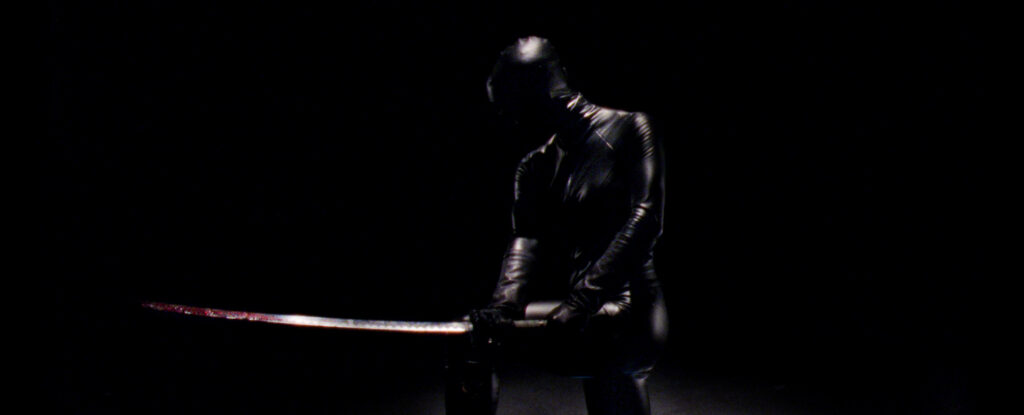
1. “REFLECTION IN A DEAD DIAMOND,” by Hélène Cattet and Bruno Forzani
This film alone made my entire experience at Berlinale worthwhile. It’s one of those rare cinematic objects, a pastiche, and a very playful one at that. Spinning a James Bond-type narrative to hallucinogenic effect, the film desecrates and cannibalizes on several film genres—action thrillers, spy movies and cult subgenres—among them Giallo, the ’60s Eurotrash movies and the Fumetti Neri, a subgenre of Italian supervillain comics born in 1962 with the creation of the Diabolik character, a lethal assassin who kills without compunction using stiletto knives as a weapon. With sex and violence as the dominant themes, the Fumetti Neri became so popular that it set off a wave of similarly outlandish super-criminals like Fantax, Sadik, Kriminal and Satanik.
While “Reflection” is clearly paying homage to and building on this irreverent comic book tradition, the spectator doesn’t need to have any prior knowledge of this rather niche source material to enjoy the movie. Visually and aurally, “Reflection” is a sublime experience, a wild ride, an acid trip of a movie. And if you don’t take anything “meaningful” away with you after the end credits roll over, worry not, perhaps the whole point of the film was to offer you the pure pleasure of image-making, stripped of the traditional trappings of plot and character.
Playing with the spectator’s perception, the film sets in motion a world of illusion, delusion, disorientation and paranoia, with blurred boundaries between reality, fantasy, memory and madness. It’s the world of former secret agent John Dimas (Fabio Testi) is now a retired septuagenarian who resides in a luxurious hotel on the Côte d’Azur and spends his time relaxing on a postcard-perfect beach nearby. The existential ennui this former action man must feel doing nothing is swiftly dispelled at the sight of a beautiful and mysterious brunette in a red bikini. Bring on the “gun,” AKA all sorts of inventive and outlandish weaponry, and you have the essential ingredients for the perfect movie. Jean-Luc would have greatly appreciated it.
For those who might find the film structurally discombobulating and narratively disorienting, I would argue that we need films like this. The stories we tell ourselves act as some kind of self-hypnosis and in order to change people’s thinking, the films’ narrative structure needs changing. It’s usually the Forum section of Berlinale that hosts experimental films that defy artistic conventions so it was very surprising to discover such an unusual film in the competition. Reflection acts as a narrative reset, and as such it felt fresh, as if in the state of constantly reinventing itself, and extremely daring. Here’s two artists that don’t pander to the (snobbish) tastes of some high-profile film critics or to the general expectations the audience might have of a “festival film.”
The experimental joy and avant-gardist panache the movie displays are unrivalled. In the press notes, the filmmakers mention having had recourse to “stereoscopic writing,” a method popularised by the Japanese director Satoshi Kon (“Millennium Actress,” “Perfect Blue”) for its ability to give “an illusion of narrative 3D by developing the story with different thematic strata, with different layers of themes and narratives to create an emboss effect that plays on the perception of the character and the spectator, thus allowing to organically shape the world inside the mind of the protagonist along with his loss of orientation within it. The narrative hence becomes a multifaceted “diamond” with its multiple grids of kaleidoscopic interpretations. For the marvelous complexity of its construction and the sophistication behind its concept, this film was the true diamond in this year’s Berlinale competition.
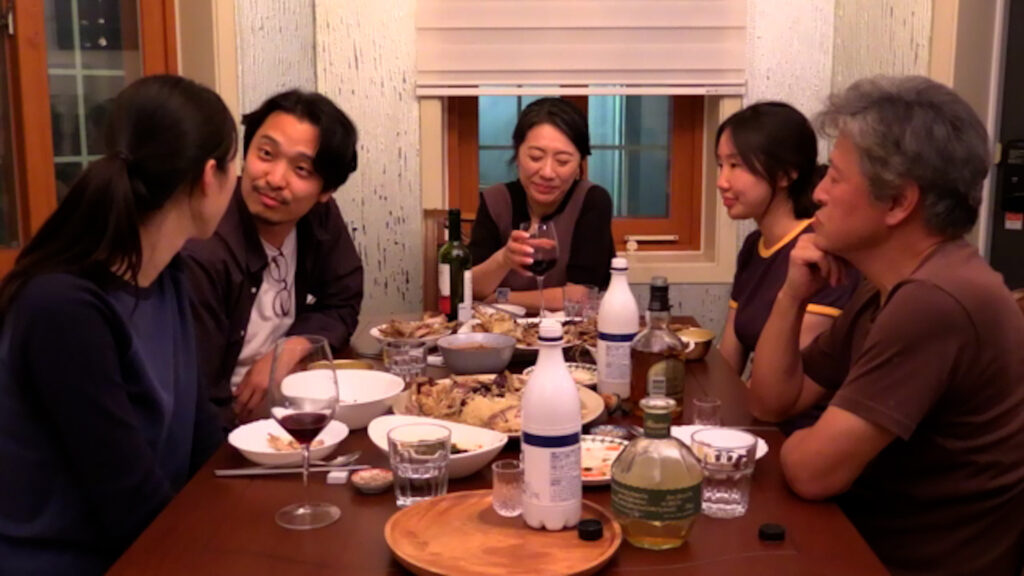
2. “WHAT DOES THAT NATURE SAY TO YOU,” by Hong Sangsoo
Believe it or not, this is the Korean maestro’s 33rd film, and although perfectly similar in structure, feel, tone, themes and visual style to his previous ones, I never tire of his cinema. I think the quality that most appeals to me about Hong’s films is their calmness, which is only interrupted once by a sudden eruption of energy at the midpoint or in the third act. It’s a classic structure in a way: the movie starts with a state of order, followed by disorder, and ends with a return to order. Amid the cinematic feast of a festival, his films are like a palate cleanser — refreshing, and a reset for the senses.
The simple story deals with Hong’s favorite theme: family dynamics. In the film, a young poet accompanies his girlfriend to her family’s countryside home to spend the day with her family. We learn immediately that the father venerates his daughter. Inquisitive, he probes the poet about his intentions, asking direct and unexpected questions such as: “What do you see in her?” Through this intrusive questioning, the father tests his potential son-in-law’s ability to perceive the world truthfully as well as his ability to be a true poet. The film concerns itself with the question: Will the young man pass these tests?
Hong’s storytelling is subtle yet effective and features signature scenes of conviviality over food and drinks, during which a confrontation between characters suddenly erupts, with some memorable laugh-out-loud exchanges between the young woman’s family and this pretentious poet/potential son-in-law/guest. It was touching to witness the filmmaker’s gentle nature towards his characters — as ironic or sarcastic as Hong can be. In the end, his love for his characters, and by extension his faith in humanity, is undeniably there.
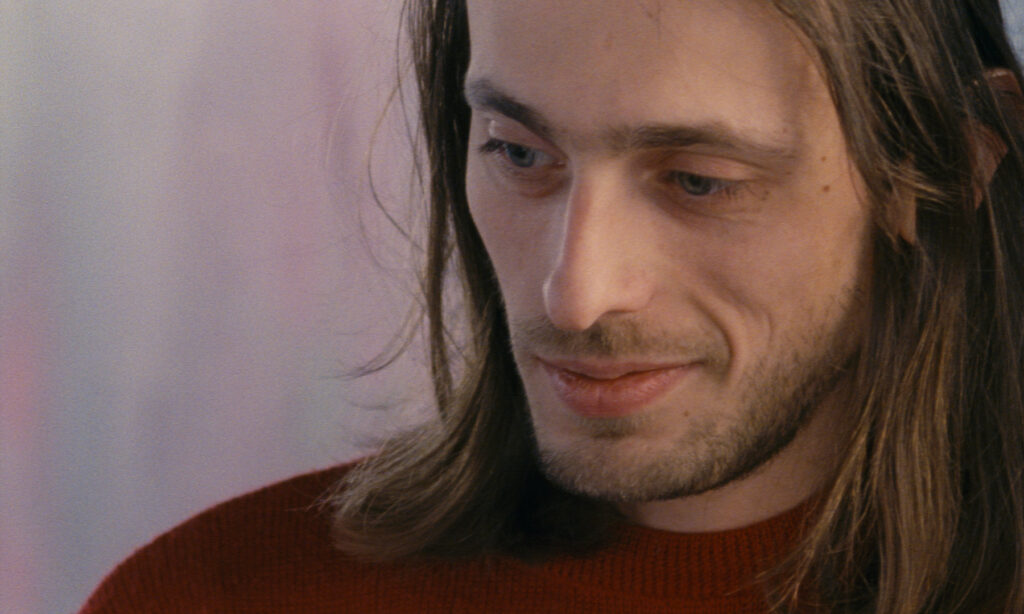
3. “ARI,” by Léonor Serraille
This wonderful film full of genuine emotion follows a young man, Ari, through an existential crisis. As a trainee teacher in Paris, the pressure is overwhelming. The 27-year-old experiences an acute burnout in front of his class, a humiliating experience that forces him to quit his job. Turning to his father for support, he is thrown out of the house for being a failure. In almost every subsequent frame of the film, Ari is either breaking down or building himself up again in front of our eyes. The many close-ups give the film an edge and relentless intensity, as the young man tries to rekindle relationships with old friends and get his life in order.
Played with raw energy by a newcomer, Andranic Manet, Ari embarks on a journey of self-discovery that serves as the portrait of Gen Z. The dialogue veers between revelatory and confrontational and mimics the way we speak today and what we tell each other in private conversations to perfection. This is certainly the result of Serraille’s unique creative process for making this film: her close collaboration with the students from Conservatoire de Paris, who openly shared their personal issues, experiences, thoughts, and dreams, a process reminiscent of what Edgar Morin and Jean Rouch asked in “Chronicle of a Summer:” “How do you live? What is your job? Are you happy? Is there something you believe in? What is your daily life like?” This process gives the film an authenticity that is deeply engrossing, and the uncanny ability to raise the same questions in the audience. While it is true that the narrative meanders a little, it also continues to surprise at every turn.
(To discover more about the film and Léonor Serraille’s career as one of the most prominent independent filmmakers in France, read our interview from Berlinale here).
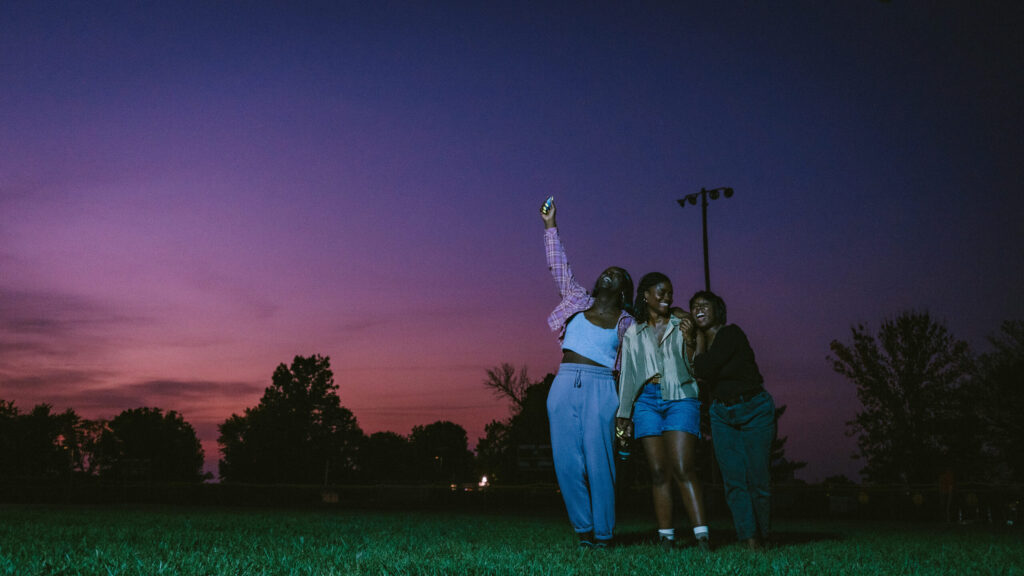
4. “DREAMS IN NIGHTMARES,” by Shatara Michelle Ford
Bowing in Panorama, the platform for unapologetically queer, feminist and political films, this stylistically fresh and glowing American feature shares similar themes with “Ari,” but in a queer Black American context.
The loss of jobs in the arts sector, future uncertainty, and financial difficulties plague the lives of three former college friends, Z (Denée Benton), Tasha (Sasha Compère) and Lauren (Dezi Bing). They embark on a road trip across the U.S. in search of a fourth friend who recently went off the radar. Through these characters, Ford explores what it means to be Black, female, and queer in contemporary America, away from clichés and in a way that feels authentic. The film is also an ode to friendship as the final safety net and last refuge when everything else crumbles and the world stops making sense.
As with “Ari”, the characters’ journey is one of self-discovery, often through confrontation, with each other and also with “outsiders”, such as the missing friend’s parents. In a memorable dinner scene in which the awkwardness is on a par with those signed by Ruben Östlund — cringe-inducing and tinted with social discomfort, passive aggression, and extended painful silences — the parents of the missing friend are gradually made aware of the sexual preferences and gender identity of their daughter, a moment that leads to a quick exit on the part of the guests.
Another stand-out scene was seeing a Black woman being valued on screen when Tasha’s (Sasha Compère) loving boyfriend offers her the deeds of the house they live in. The scene is maybe too emphatically rendered, but it felt radical and urgent. Ford’s intentions to have Black characters represented differently on screen, away from stereotypes, were clear, making this a very political film.
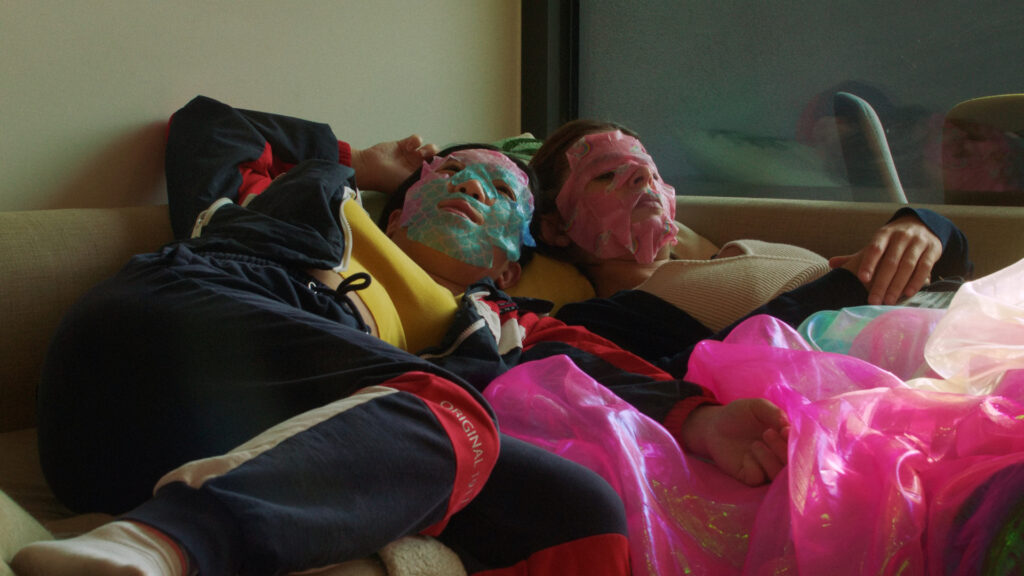
5. “FWENDS,” by Sophie Sommerville
This Melbourne-set two-hander felt like a true discovery at this year’s Berlinale. I saw it on the very last day, a screening I barely managed to squeeze in before the Closing Ceremony.
Nestled within the experimentally daring Forum section of the festival, this funny, inventive and heartfelt film sheds new light on the complexity of female friendship and that very vulnerable window of transitioning from late adolescence to adulthood. Melissa Gan and Emmanuelle Mattana play Em and Jessie, two former college friends who reunite for a fun weekend in Melbourne. The former is a junior lawyer navigating an abusive workplace that she worked extremely hard to get into, while Jessie is a former stripper and world traveler who finds herself a bit adrift, having recently ended her long-term relationship.
I took pleasure in watching these two young women making casual conversation and flâneuring through Melbourne in the spring, exploring the city and sharing stories, trying to reconnect and failing as much as succeeding. Their conversation revolves around the subjects that interest them: their job, their future, their love lives, as well as the relationship they have with each other. The film adds layer after layer of personal and shared journeys incrementally, and while the tone is generally light and fun, their existential anguish cannot be perfectly concealed.
The film shares a similarity with “Ari” in the way it was made, through intense collaboration with the actors which leads to authentic dialogue that probes the depth of human relationships. The filmmaker acknowledged her interest in “storytelling that embraces the real world as part of the aesthetic” and in “creating situations for people to be as honest and as human as they could be within the confines of the story.”
A quick search revealed that Sommerville’s first short film “Peeps,” shot guerrilla-style in a shopping center on a budget of $4,000 AUD, was selected for Telluride Film Festival in 2019, among other festivals. An independent filmmaker through and through, Sommerville confesses that they “made this film using what we had, the people we could find, the free locations we could shoot at, and the favors we could pull.” Small in scale but rich in emotional complexity, this Forum treasure was my best discovery of Berlinale 2025.
Regions: Berlin
